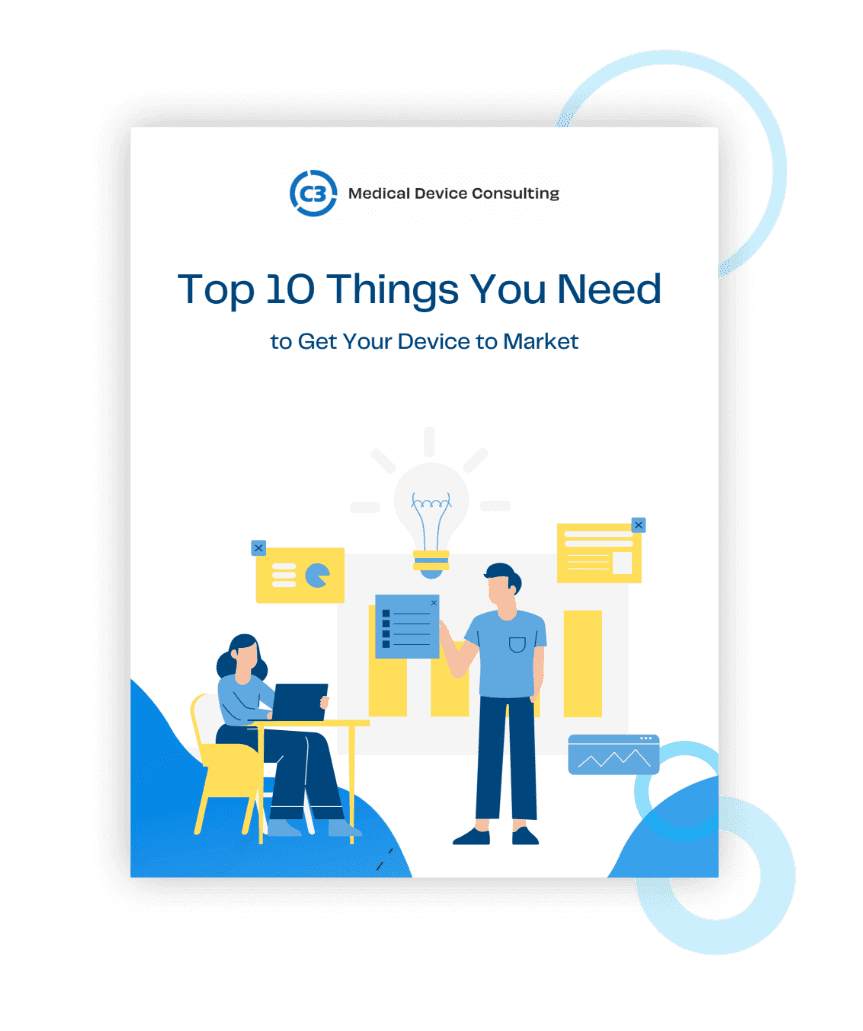
Most new medical devices go through a similar process to meet standards and compliance with the FDA. It includes everything from identifying a need for a new product to releasing the final product for use. Although the process can vary based on a variety of factors, such as whether the device is completely new or an updated version of a product that already exists, medical device design typically consists of six distinct stages.


The first stage of medical device design involves determining the need for a new type of device. Developers begin by identifying a specific problem within the medical industry that requires a new or updated device to adequately solve and researching background information that helps them find a starting point. This initial stage is when those involved in creating new medical devices identify the most basic elements of the device, such as what it will be used for, an estimated cost of designing and building the device, and an overview of FDA requirements that will need to be met later in the process.
During the design input requirements stage, medical device designers create an initial plan for developing a new medical device. Although the version that is designed at this stage will not be the final product, it provides a starting point for determining what factors and materials are needed to create a successful device and minimizing the number of significant changes that will need to be made in later stages. The design input requirements stage addresses a variety of elements of product design, such as the electrical, mechanical, and software requirements of the device, as well as its materials and safety features. At this stage, design controls matter, and when creating your product specifications, you must follow an FDA standard design control process.
The engineering stage is the process of designing the medical device, and good engineering practices include compliance and standards to ensure FDA approval. It utilizes the details laid out in the previous stage to create a preliminary plan for how the product will be made. Specific materials that will be used to build the device and the type of equipment and software that will be used to manufacture it are chosen. This stage is broken down into three primary types of engineering, including mechanical engineering, electrical engineering, and software engineering.
Any type of medical device that utilizes electricity is then passed on to electrical engineers, who identify the types of batteries or external power, circuits, voltage, and other electrical elements that best meet the needs of the device.
Although software engineering is not required for every type of medical device, most new devices include some type of software component. Software engineers decide on the most appropriate type of operating system, develop software, handle any programming that is needed, and ensure that the device’s software complies with strict FDA cybersecurity requirements.
Prototyping involves building the first fully-working medical devices. This step expands upon the preliminary designs of earlier phases, and prototype devices are extensively tested for both safety and functionality. Any potential issues are then adjusted before creating the final version of the product that will be used by medical professionals or patients.
The iteration stage encompasses redesigning the medical device to fix any problems that came up during the first prototyping stage. This step plays a crucial role in fine-tuning the device to make it ready for final manufacturing. The prototyping stage and the iteration stage are often repeated several times in order to make sure that all potential issues are addressed before releasing the device to users, including those that may come up as a result of an earlier adjustment intended to solve a different problem. At this point, it’s important for verification testing to take place, ensuring everything can be traced back to design input requirements.
The final stage of medical device design involves determining how new products will be made before being sent to hospitals and other medical facilities after the final prototype has been determined. Deciding what machines, companies, and procedures will be used to make the devices is just as important as the decisions made during earlier phases as far as ensuring that the finished products are made properly and will be safe for both patients and medical professionals.
Medical device design and engineering go hand in hand to expand the capabilities of the medical field. At C3 Medical Device Consulting, we are here to help developers use new ideas to create innovative products that meet needs across a wide range of specializations. We are proud to assist both startups and large companies with every step of the process of creating new electronics, software, or other ideas for the medical industry.
Contact us today to learn more about how partnering with us can be the best first step in getting your medical device from an idea to a product that has the ability to change lives.
Avoid wasting time, money, and unforeseen problems that stall your development. Download our free guide to ensure your device meets crucial requirements to successfully make it to market.







Avoid wasting time, money, and unforeseen problems that stall your development.
Download our free guide to ensure your device meets crucial requirements to successfully make it to market.